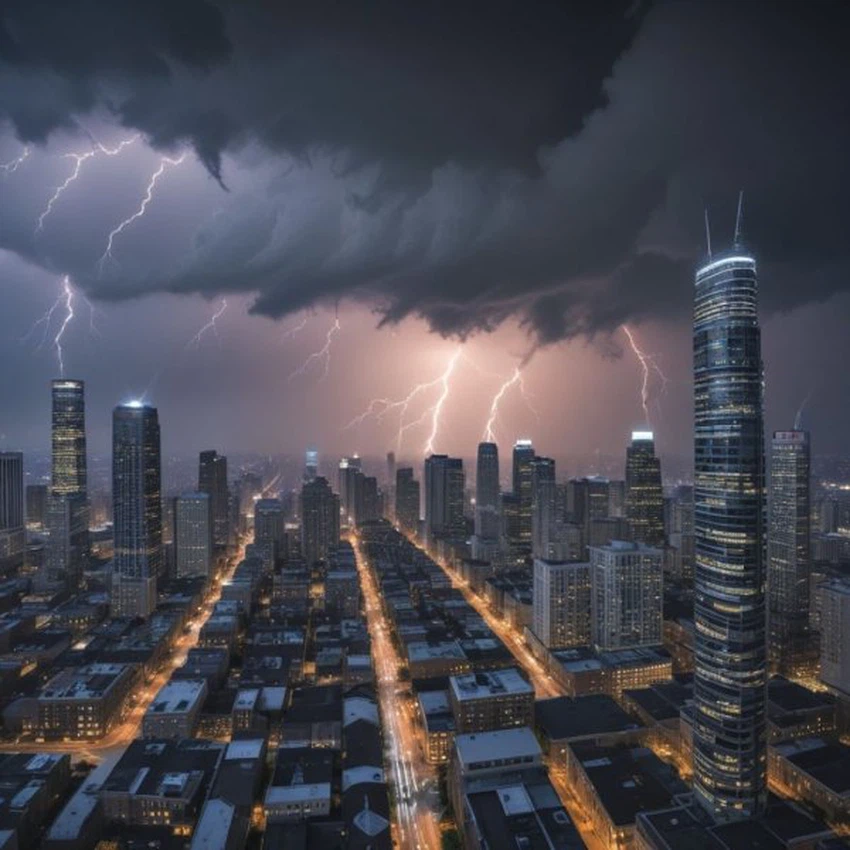What is the relationship between the solar storm that struck Earth last week and the formation of a new wave of hurricanes?
Arabia Weather - A new study indicates that the solar storm that struck the Earth last week may cause a wave of hurricanes. The team used a model to analyze tropical cyclone activity over the past 5,500 years and found 11 time periods in which there were 40% more storms than normal, and these time periods turned out to be experiencing intense solar activity.
The theory is that when the Sun is more active, it sends more energy to Earth, warming the oceans and fueling tropical storms. The news comes at a time when America is experiencing a hurricane season expected to break records, with at least 20 expected. A specific storm will hit the country.
When the Sun is active, it releases energy flares of energetic particles that travel through space, and when they collide with the Earth, these particles bring in the Sun's energy that heats our oceans, providing fuel for tropical storms.
A strong solar storm is on its way to Earth tomorrow, Saturday

The effect of solar activity on Earth
When the Sun is active, it releases flares of energetic particles that travel through space. When they collide with the Earth, these particles bring in the Sun's energy that heats the oceans, providing fuel for tropical storms. The theory is that when the Sun is more active, it sends more energy to the Earth, which It warms the oceans and promotes the formation of tropical storms.
A solar storm , or geomagnetic storm, is known as a major disturbance in the Earth's magnetosphere, the area controlled by the planet's magnetic field. Last Friday's storm was rated a "G4" (on a scale of one to five), making it a "severe" storm.
The National Oceanic and Atmospheric Administration (NOAA) explained in a statement last Thursday that
“Geomagnetic storms can affect infrastructure in near-Earth orbit and on the Earth’s surface.” She added that the storm could "disrupt" communications, the electrical power grid, navigation operations, radio and satellites.
See also:
Is there a relationship between hurricanes and solar storms?
Yang Wang, lead author of the study from Florida State University, told the Daily Mail she could not predict whether recent intense solar activity would lead to more tropical cyclones this year.
Solar activity, or total solar radiation (TSI), used in the study was determined by analyzing the carbon found in tree rings. When the sun's activity weakens, a type of carbon called carbon 14 increases in the atmosphere, which can be observed in tree rings that absorb carbon. From the air.
Wang explained:
“The role of solar activity in modifying tropical cyclone activity is complex.” "Increased solar radiation contributes to ocean warming. As oceans warm, they have more energy available to convert into tropical cyclone winds, which may provide more favorable conditions for stronger storms to develop," she added.
The team reconstructed a 5,500-year record of storms in the northeastern Gulf of Mexico region , and compared the simulation to carbon captured by tree rings to determine solar events through time.
The researchers wrote in the study:
“The strong statistical coherence between increased tropical cyclone activity and higher solar radiation supports the theory that solar activity may be an important driver of climate variability and tropical cyclone activity through its influence on atmospheric circulation, ocean currents, and sea surface temperatures.”
However, Professor Wang pointed out that the sun's energy can also heat the upper atmosphere, reducing the temperature difference between the surface and the upper atmosphere. She continued:
“This not only weakens the vertical motion within the developing tropical cyclone, but also causes changes in atmospheric circulation.”
"Our results indicate that a combination of higher solar radiation and other factors, including El Niño/Southern Oscillation, warmer sea surface temperatures in the Gulf of Mexico, and positive phases of the Atlantic Multidecadal Oscillation, create favorable conditions for tropical cyclone formation," she added.
See also:
US agency NOAA Periods of solar storms are likely today
Sources:
Arabia Weather App
Download the app to receive weather notifications and more..



